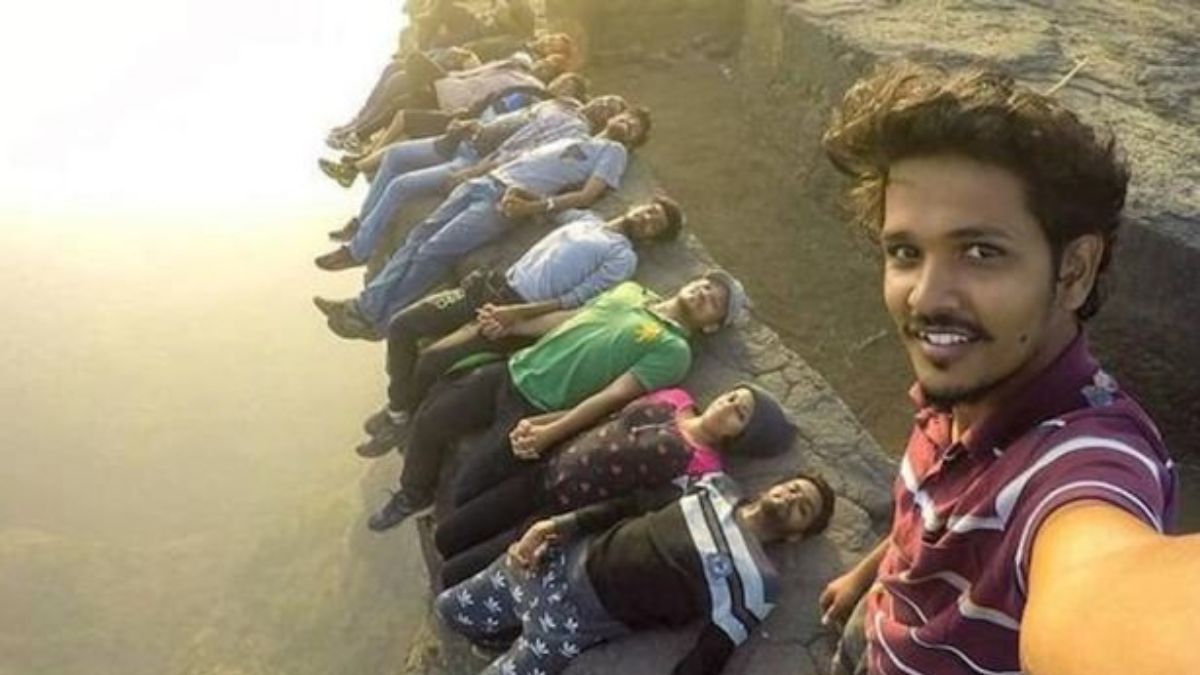In the age of Instagram and endless scrolls, a cool selfie for a feed seems a must-have. But chasing that “perfect shot” can turn deadly for some. From railway tracks to cliff edges, people are taking dangerous risks, and tragically, many are paying with their lives.
A new study by The Barber Law Firm has now revealed which countries are the deadliest for selfies, and India, unfortunately, tops the list, with more than 271 selfie-related incidents.
To reach this conclusion, researchers tracked selfie-related incidents reported globally between March 2014 and May 2025. Using Google News as a source, they included only those cases where attempting a selfie directly caused an injury or death.
So, what is driving India’s selfie obsession? And why are so many people willing to risk their lives for a picture? Let’s take a closer look.
India ‘most dangerous’ for selfies
India has earned the grim distinction of being the world’s most dangerous country for selfies, accounting for 42.1 per cent of all such incidents globally, the study finds. Out of 271 selfie-related casualties recorded in the country, 214 were deaths and 57 were injuries.
A 2018 study titled Selfies: A Boon or Bane?, based on English-language news reports, highlighted that the majority of these so-called “killfies” were caused by drowning, being hit by vehicles or trains, or falling from great heights.
Editor’s Picks
Further, the researchers cautioned that the real number of deaths may be much higher, since many cases go unreported and “death by selfie” is not officially recognised as a cause of death.
The warning signs are clear, yet tragic incidents continue to surface across India.
Earlier this week, 22-year-old YouTuber Sagar Tudu from Berhampur was swept away by powerful currents while shooting content at Odisha’s Duduma Falls.
Just two months earlier, six cousins aged between 13 and 19 drowned in the Godavari River at Telangana’s Medigadda while trying to click selfies in deep water.
In Maharashtra’s Thane district, a 24-year-old man lost his life after being struck by a long-distance train earlier this year while taking a selfie on the tracks.
And in Karnataka’s Bandipur Tiger Reserve, a tourist was trampled to death by a wild elephant after reportedly attempting to pose for photos with the animal.
Why is India so obsessed with selfies?
Researchers say it’s a mix of factors: densely populated cities, easy access to risky spots like cliffs, riversides and train tracks, and above all, a deeply rooted social media culture.
Dr Jolynna Sinanan, an anthropologist at the University of Sydney who studies social media, explained to the Australian Broadcasting Corporation (ABC) News that India’s visual culture is unlike many other countries.
“It’s not just advertising, or entertainment and media culture, but it’s also through public messages, images such as gods and religious figures, framed photos and personal photos throughout the home,” Dr Sinanan said.
“So the way that selfie culture is more pervasive in India is linked to these different kinds of public and private visual cultures. Photos, whether they’re selfies or posed, are also about identity building in both a symbolic and material way that’s related to that offline visual culture,” she added.
This hunger for recognition online, experts say, often overshadows safety concerns. The urge to create viral content has led many to take extreme and sometimes deadly risks, much like what the world has seen with dangerous TikTok challenges.
Kris Barber, Founder and Principal Attorney of The Barber Law Firm, says, “Our research highlights a troubling trend where the pursuit of social media validation is literally costing lives. The perfect photo simply isn’t worth the danger.”
He also urged people to think twice before attempting risky stunts for likes. “There are always safer alternatives to capture beautiful moments without putting yourself at risk. No amount of likes or shares can justify endangering your life,” Barber said.
Which other countries are on the list?
While India tops the list by a wide margin, several other countries also reported worrying numbers.
The United States came in second with 45 cases (37 deaths and 8 injuries), followed by Russia with 19, Pakistan with 16, and Australia with 15. Other countries in the top 10 included Indonesia, Kenya, the United Kingdom, Spain and Brazil.
Though their numbers are much lower than India’s, these cases still underline a worrying global pattern, particularly in tourist hotspots where travellers chase the “perfect shot” without weighing the risks.
With input from agencies
End of Article

)

